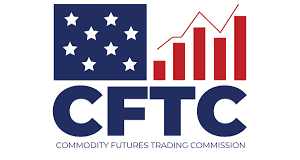
Who uses Algorithmic Trading?
Algorithmic trading is a method of executing orders using automated, pre-programmed trading instructions. This is done in order to manage large volumes of trades at high speed and with a high degree of accuracy. Algorithmic trading has become increasingly popular in recent years due to its ability to process large amounts of data and to make trades at a much faster pace than is possible with traditional manual trading.
There are several different aspects of algorithmic trading, including
Order Execution: Algorithms are used to automatically execute trades based on specific parameters and conditions set by the trader. This can include order type, size, price, and timing.
High-Frequency Trading: This type of algorithmic trading uses extremely fast computer algorithms to execute trades in fractions of a second. High-frequency trading is often used to take advantage of small price movements in highly liquid markets
Statistical Arbitrage: This type of algorithmic trading uses statistical models to identify price disparities between assets and execute trades that take advantage of these disparities.
Machine Learning: Algorithms can also be trained using machine learning techniques to identify patterns in market data and make predictions about future market movements.
Portfolio Optimization: Algorithms can be used to optimize a trader’s portfolio by rebalancing and adjusting positions in response to market conditions.
Overall, algorithmic trading offers numerous advantages over traditional manual trading, including increased speed, improved accuracy, and reduced risk. However, it is important to carefully consider the potential drawbacks and risks associated with algorithmic trading, such as the potential for unintended consequences, market manipulation, and technology failures.
Who uses Algorithmic Trading? Benefits and Uses
A wide range of financial institutions uses algorithmic trading, including investment banks, hedge funds, asset management firms, and retail brokerages. These entities use algorithmic trading to improve the efficiency and accuracy of their trades, to reduce the cost of executing trades, and to manage risk.
Many different types of participants in the financial markets can benefit from algorithmic trading. Here are some of the main groups that can benefit from this type of trading:
Retail Investors: Algorithmic trading can help retail investors execute trades faster and with greater accuracy than manual methods, which can help them achieve better returns on their investments.
Institutional Investors: Institutional investors, such as hedge funds and investment banks, can benefit from algorithmic trading by executing large trades quickly and efficiently. This can help them maximize profits and better manage risk.
Market Makers: Market makers, such as high-frequency trading firms, can benefit from algorithmic trading by executing large numbers of trades in a short amount of time. This can help them earn profits from the spread between the bid and ask prices.
Traders: Traders, both professional and amateur, can benefit from algorithmic trading by automating their trading strategies and executing trades faster and with greater accuracy than manual methods.
In conclusion, algorithmic trading can benefit a wide range of financial market participants, including retail investors, institutional investors, market makers, and traders. These benefits can help participants achieve better trading results and improve their overall financial performance.

What is the importance of algorithmic trading?
The importance of algorithmic trading in the financial industry is due to several key factors:
Speed: Algorithmic trading allows trades to be executed at a much faster pace than manual trading, which is important in fast-moving markets where every second counts.
Accuracy: Algorithmic trading is able to process large amounts of data and execute trades with a high degree of accuracy, reducing the risk of errors that can occur with manual trading.
Cost savings: Algorithmic trading can help reduce the cost of executing trades by automating processes that would otherwise need to be performed manually.
Improved risk management: Algorithmic trading can be used to monitor and manage risk in real time, which is critical for financial institutions that must comply with various regulatory requirements.
Increased competitiveness: Algorithmic trading gives financial institutions the ability to execute trades faster and more accurately than their competitors, which can give them a competitive advantage in the marketplace.
Overall, algorithmic trading plays a critical role in the modern financial industry by helping financial institutions execute trades more efficiently, accurately, and cost-effectively.
Algorithm options trading is a type of trading that uses complex mathematical models and algorithms to analyze market data and execute trades automatically. It involves developing a set of rules or instructions that the trading software can follow to identify potential trading opportunities and make trades based on those opportunities. The goal of algorithmic options trading is to achieve consistent, profitable results by executing trades with speed and precision that are not possible with manual trading methods.
Algorithmic trading has become increasingly popular in recent years due to its many benefits in the business world. To conclude, here are some of the key advantages of algorithmic trading:
Speed and Efficiency: Algorithmic trading can execute trades much faster and with greater accuracy than manual methods. This can help traders take advantage of market opportunities before they disappear.
Improved Risk Management: Algorithmic trading systems can help traders better manage risk by using mathematical models to evaluate and adjust positions in real time. This can help traders avoid large losses and maximize profits.
Increased Liquidity: Algorithmic trading can help increase market liquidity by enabling traders to execute large orders quickly and efficiently. This can help improve market efficiency and reduce volatility.
Reduced Emotional Bias: Algorithmic trading systems can remove the emotional bias that often affects manual trading decisions. This can lead to more objective and profitable trading decisions.
Increased Transparency: Algorithmic trading systems provide a transparent and auditable record of all trades, which can help improve market integrity and reduce the potential for fraud or manipulation.
In conclusion, algorithmic trading offers many benefits to businesses, including improved efficiency, better risk management, increased liquidity, reduced emotional bias, and increased transparency. These benefits can help businesses improve their trading results and achieve greater success in the financial markets.
See Our – Why use an Automated Trading System ATS
See Our Limited Time “Promo Offer” and see how you can become our Client!














